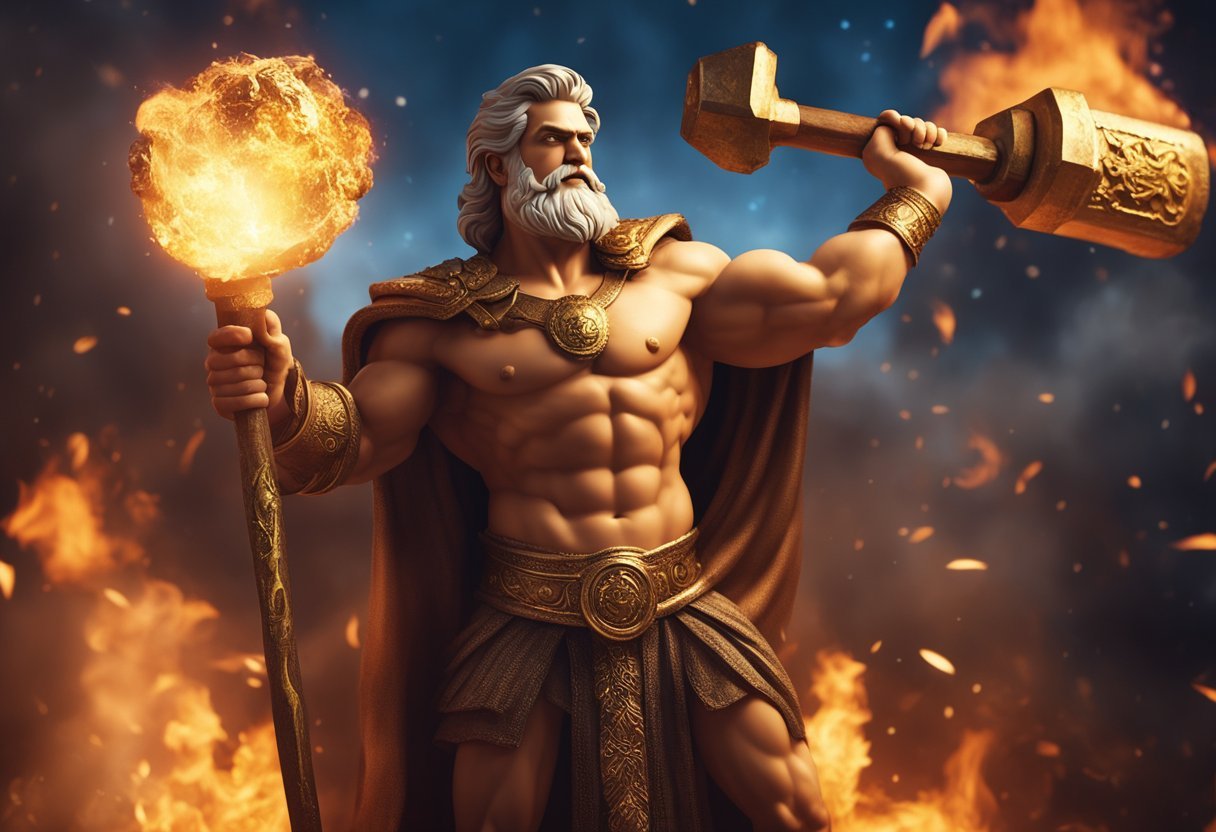Hephaestus, the Greek god of fire and forge, stands as a fascinating figure in mythology, embodying resilience and exceptional craftsmanship. He is revered for his incredible ability to create wondrous artifacts and weapons for the gods, despite being described as having physical imperfections. Hephaestus’s talents in metalworking and sculpture make him the divine patron of blacksmiths and artisans.
Born to Zeus and Hera, or sometimes just Hera alone, Hephaestus’s life was not without challenges. He was cast from Olympus because of his perceived imperfections, yet his skill and creativity earned him a place among the gods once more. The volcanic and gaseous fires often symbolized his immense workshops, where he crafted items of unmatched beauty and power.
Hephaestus’s story is a testament to the power of creativity and perseverance. His narrative weaves through myths and legends, showcasing how even the gods looked to him for his unmatched craftsmanship. From his iconic forge, Hephaestus created many legendary items, including Hermes’ winged helmet and Achilles’ armor, cementing his legacy as a master artisan in the annals of mythology.

Hephaestus’ Origins and Family
Hephaestus is a fascinating figure in Greek mythology. His origins and family connections are key to understanding his role among the Olympian gods.
Birth and Parentage
Hephaestus was born to Zeus, the king of the gods, and Hera, the goddess of marriage and family. In some versions of the myth, he is born from Hera alone, without Zeus’s involvement, as an act of revenge for Zeus birthing Athena without her. The circumstances of his birth are notable because he was born lame, which led Hera to throw him from Mount Olympus in disdain.
Despite this harsh beginning, Hephaestus’s talents in craftsmanship and smithing eventually earned him a place back among the gods. His skill in creating weapons and tools made him invaluable, and his forges were established beneath volcanoes like Mount Etna.
Siblings and Divine Relations
Hephaestus’s siblings include some of the most powerful deities in Greek mythology. As the child of Zeus and Hera, he is the brother of powerful gods like Ares, the god of war, and Hebe, the goddess of youth. Each sibling had their own distinct sphere of influence among the gods and mortals.
His closest divine relation outside his immediate family was Athena, the goddess of wisdom and war. They shared a common bond through their patronage of crafts and artisans. Relationships with other gods were more strained due to his deformity and the nature of his birth, creating a complex dynamic within the pantheon. While Hephaestus’s physicality set him apart, his craftsmanship ensured he remained indispensable to the Olympian gods.
Cultural Significance and Worship

Hephaestus, the god of fire and forge, played a crucial role in ancient religious practices and mythological narratives. His presence in various cultures, symbols, and mythologies offers a deep insight into his importance across different regions and periods.
Role in Ancient Cults
Hephaestus held a notable position in ancient cults, especially within the regions of Asia Minor and Greek lands. In Asia Minor, his worship was prominent, reflecting the region’s rich tradition of craftsmanship and metallurgy.
In ancient Greece, Hephaestus had dedicated sanctuaries, with one of the most significant located at the Lycian Olympus. He was also honored in Athens by around 600 BCE, although his worship didn’t permeate all of Greece equally.
Symbolism and Iconography
Hephaestus is often depicted with symbols of his craftsmanship and fire. One of the most consistent symbols is the hammer and anvil, showing his role as the blacksmith of the gods. Other symbols include tongs and a bellows, essential tools in metalworking.
He is usually portrayed as a robust man with muscular arms, signifying strength and skill. His unique depiction often includes a lame foot, emphasizing his imperfection and adding depth to his character as the only god with a physical disability.
Comparative Mythology
Comparatively, Hephaestus shares similarities with other divine artisans in different mythologies. His Roman counterpart is Vulcan, who embodies many of the same attributes such as fire and craftsmanship.
Outside of the Greco-Roman world, figures like Ptah from Egyptian mythology exhibit similar traits. Ptah was also a creator god and patron of craftsmen. Through these comparisons, Hephaestus’s role as a central figure in mythology is underscored, showing how different cultures value fire and craftsmanship in their divine narratives.

